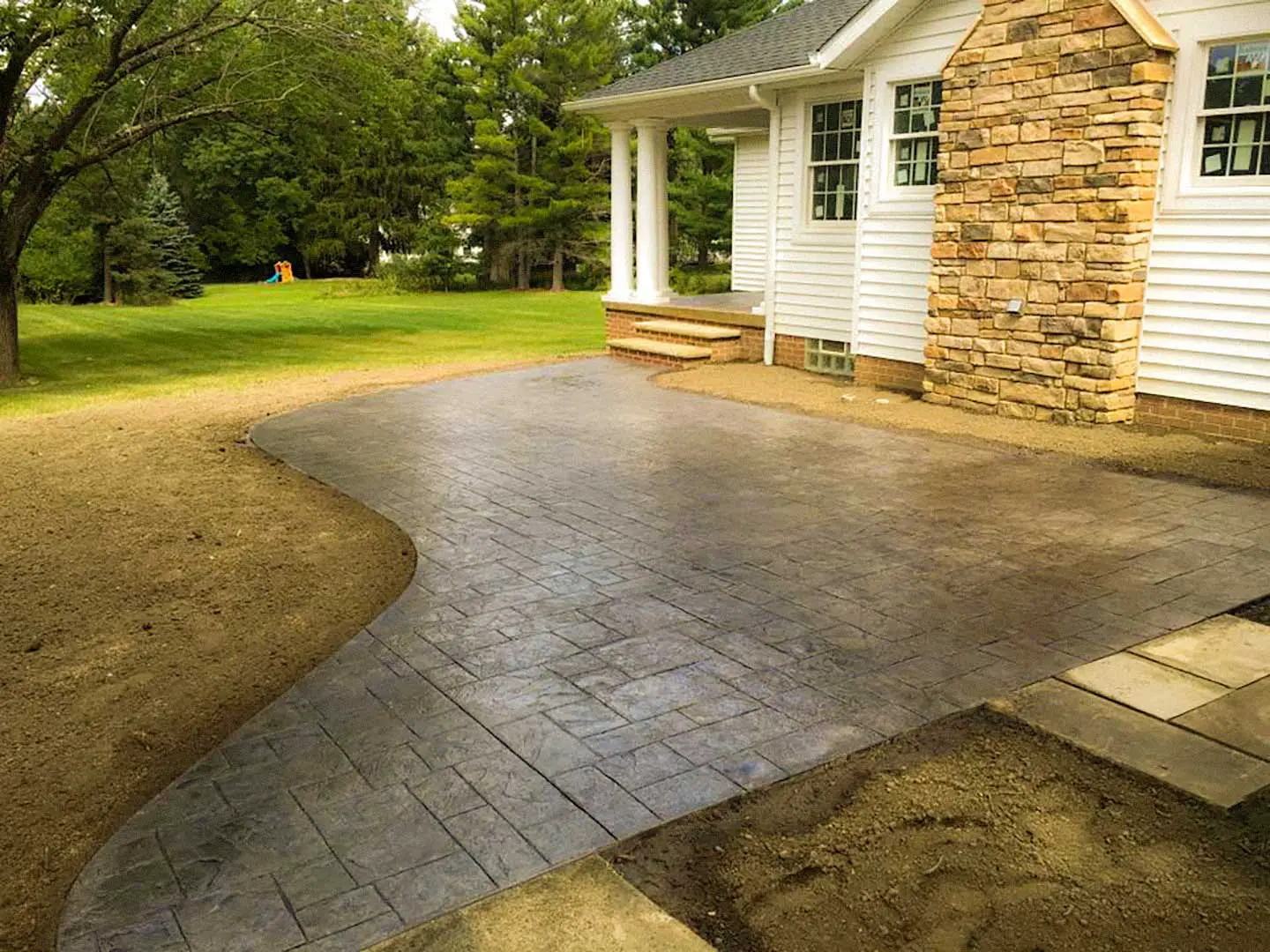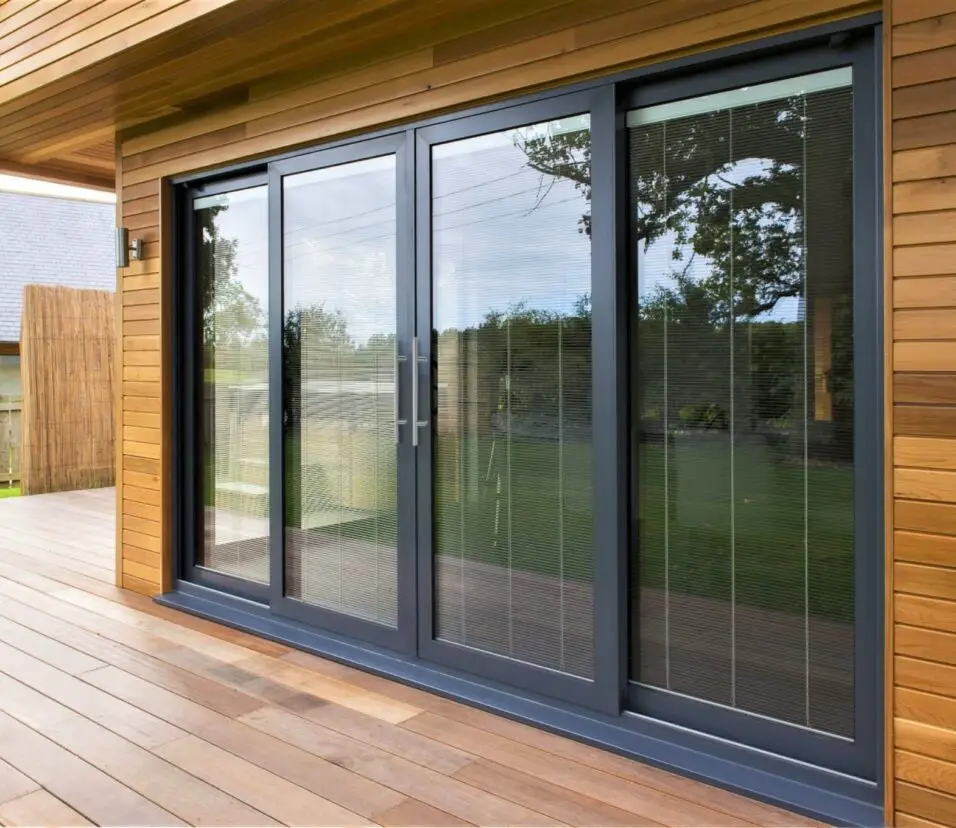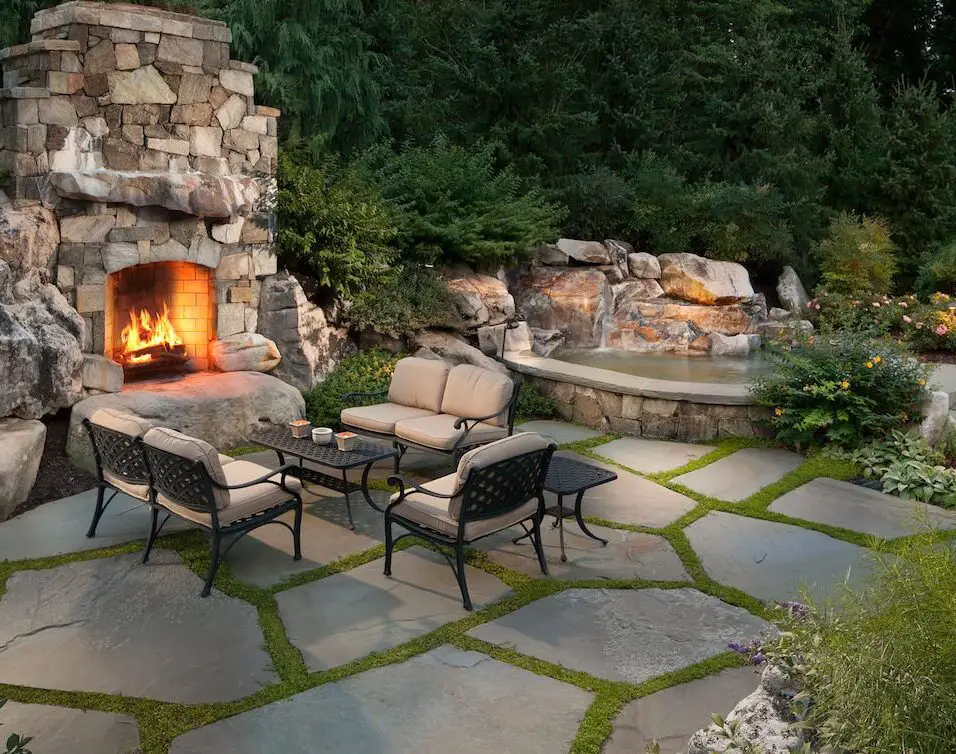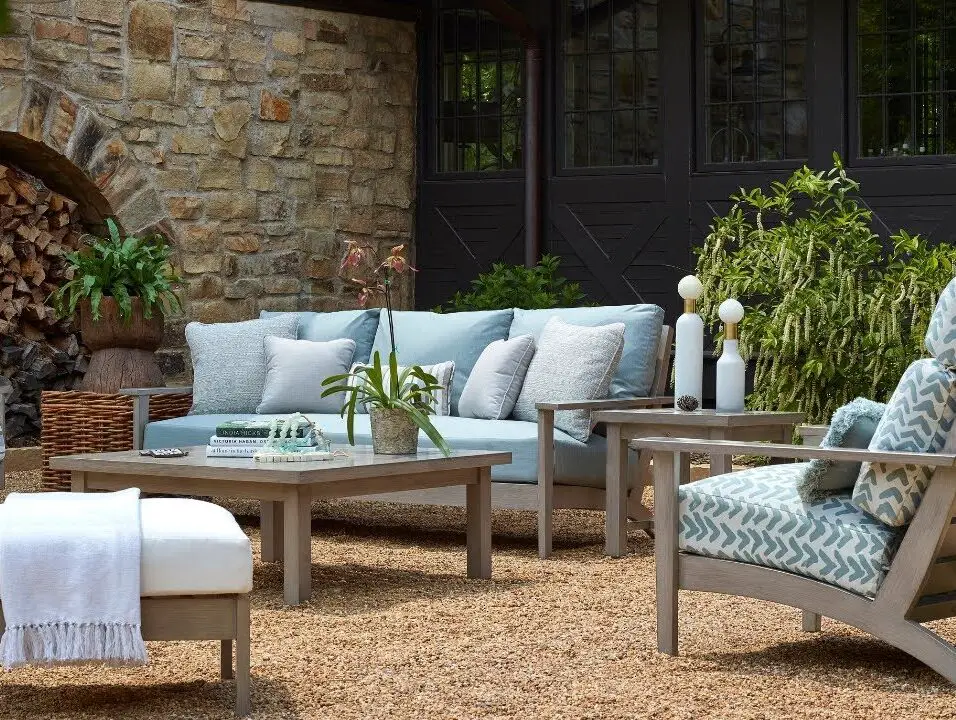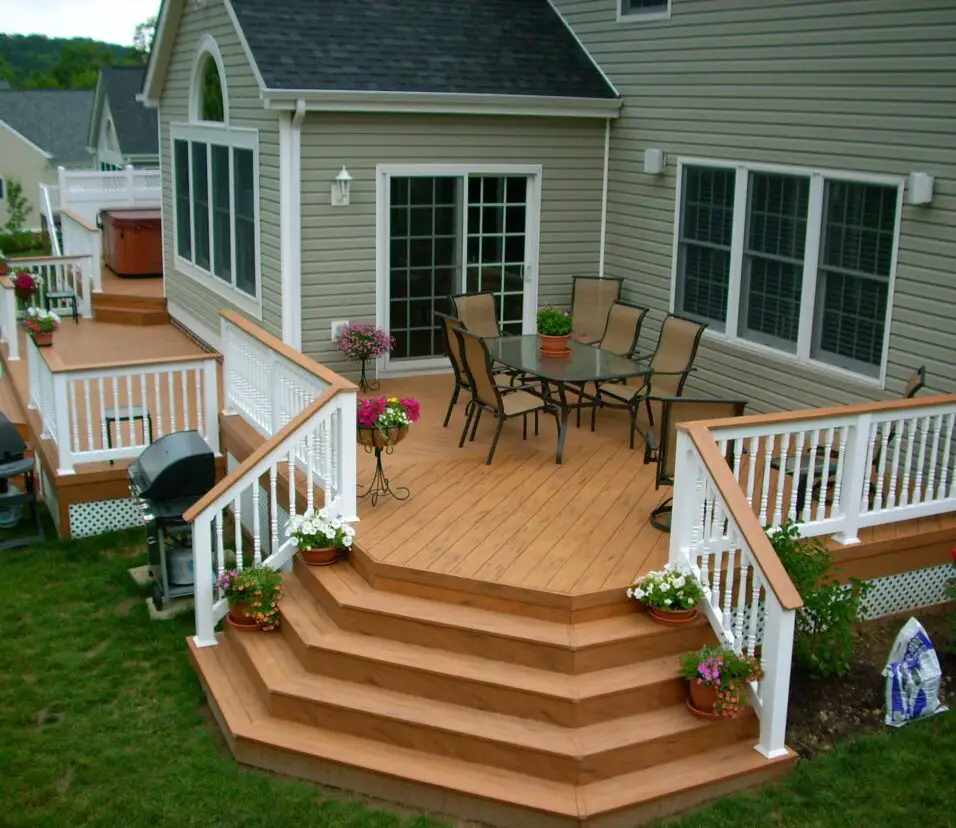What Type Of Concrete For Patio
Introduction
What Type Of Concrete For Patio: When it comes to building a patio, one of the most important decisions you’ll need to make is what type of concrete to use. The type of concrete you choose will not only affect the overall look and feel of your patio, but also its durability and longevity. With so many options available, it can be overwhelming to determine which type of concrete is best suited for your patio project.
Stamped concrete is a popular choice for patios due to its versatility and aesthetic appeal. This type of concrete is poured and then stamped with various patterns and textures to mimic the look of other materials such as brick, stone, or wood. Stamped concrete can be customized to match the style of your home and can create a stunning visual impact. However, it’s important to note that stamped concrete may require more maintenance and can be prone to cracking over time.
Colored concrete is another option to consider for your cheap patio. This type of concrete is mixed with pigments to create a wide range of colors, allowing you to achieve a unique and personalized look for your outdoor space. Colored concrete is durable and resistant to fading, making it a great choice for areas that receive a lot of sunlight. However, it’s important to choose a color that complements your home’s exterior and landscaping to ensure a cohesive and visually appealing design.
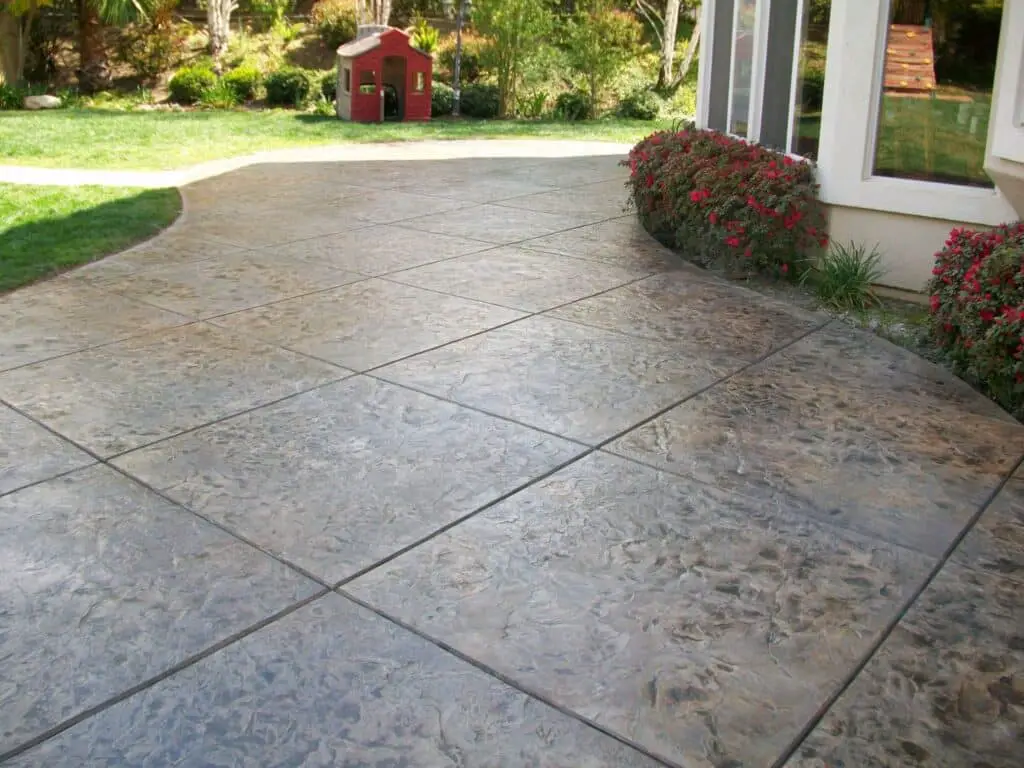
What concrete is best for a patio?
Just before you choose the best concrete for your patio, there are a few things you should think about. The type of concrete you choose will rely on what you want, what you like, the weather where you live, and other factors. You should pick concrete that looks good, is strong, and lasts a long time.
For outdoor concrete, stamped concrete is often used. This type of concrete, the surface is colored and patterned in a way that makes it look like brick, stone, or tile. For porches, stamped concrete is a great choice because it looks nice and is unique. Plus, it doesn’t need much care and lasts a long time.
You could also think about expose aggregate concrete. To make this type of concrete, the top layer is taken off to show the aggregate, which can be gravel, rocks, broken stone, or something else. Outside, uncovered aggregate concrete looks natural and has a lot of different textures, which is why people like it. Decks are safe to use because it doesn’t slip and lasts a long time.
If you want a more traditional look, plain or broom-finished concrete could be a good choice. A lot of plain concrete is pale gray. Plain concrete is what it’s called. For color and shape, you can leave it as is, paint it, or dye it. After the concrete is wet, a broom is run over the top of it to finish it. This makes the pavement rough, which makes it safer for people to walk on and keeps them from falling.
What grade of concrete is used for patios?
How long and how strong a patio is depends on the type of concrete that was used to make it. The types of concrete are based on their compressive strength in megapascals (MPa). For patios to last, they need to be made of a certain type of concrete.
The type of patio concrete that is used most often is 25. Because it has a compressive strength of 25 MPa, this concrete can be used for most outdoor projects. Grade 25 concrete can hold weight from outdoor furniture, people walking, and other things. It gives the patio floor a solid base and makes sure it lasts a long time.
You could also use Grade 30 concrete for your backyard. The 30 MPa shear strength of this grade makes it last longer and work better for heavy-duty tasks. Grade 30 concrete is used for patios that will be used a lot, like outdoor kitchens or places with a lot of foot traffic.
What thickness of concrete for a patio?
Thick concrete affects how long your patio lasts, how well it supports heavy foot traffic, and how well it handles weather. How thick should patio concrete be?
The size, form, soil type, and purpose of a patio determine its concrete thickness. The patio should be 4 inches thick. The patio is robust and durable enough for most homes at this width.
Choosing the correct backyard soil is crucial. To prevent cracking and sinking, thicken the concrete if the ground is unstable or expanding. Professional builders or specialists can advise on soil thickness.
The standard patio concrete thickness is four inches. The thickness may need to be raised to 5 or 6 inches depending on how the patio is utilized, heavy furniture, and dirt. Consult an expert to ensure your patio’s concrete is thick enough for long-term use.
Do you use concrete or cement for a patio?
When it comes to building a patio, it is important to understand the difference between concrete and cement. While these terms are often used interchangeably, they actually refer to two different materials. Concrete is a mixture of cement, sand, gravel, and water, while cement is a binding agent that is used to hold the other materials together.
Concrete is the most commonly used material for patios due to its durability and versatility. It can be poured into any shape or size, making it easy to create a patio that fits your specific needs. Additionally, concrete is known for its strength, making it able to withstand heavy foot traffic and the elements. It is also a cost-effective option, as it is relatively inexpensive compared to other patio materials.
Cement, on the other hand, is the main ingredient in concrete. It is a fine powder that is mixed with water to create a paste, which is then used to bind the other materials together. Cement is not typically used on its own for patios, as it lacks the strength and durability of concrete. However, it is an essential component in the concrete mixture.
What is the most durable outdoor concrete finish?
Durability is an important thing to think about when it comes to outdoor concrete finishes. The harsh factors outside, like sun, rain, snow, and changes in temperature, can damage the concrete surface. Because of this, it is important to pick a finish that can stand up to these situations and keep looking good and working well over time.
Epoxy coating is one of the most lasting ways to finish concrete outside. Epoxy is a kind of glue that is used to cover the surface of concrete. It builds up into a strong layer that can stand up to UV rays, chemicals, spots, and wear and tear. Commercial and industrial settings often use epoxy finishes because they last a long time and don’t need much upkeep.
The finish of stamped concrete is also long-lasting and can be used outside. In this finish, designs and textures are stamped into the surface of the concrete to make it look like stone, brick, or wood. A lot of people walk on stamped concrete, and it can also stand up to the weather and the test of time. It doesn’t crack or fade easily, which makes it a popular choice for patios, walks, and walkways outside.
Another good way to make the concrete last longer is to seal the surface. Sealers for concrete add a layer of protection that stops water from getting in, stains from showing up, and damage from freeze-thaw cycles. Sealers come in a variety of forms, such as acrylic, polyurethane, and penetrating sealers. It is important to pick the right sealer for your needs because each type has different levels of durability and safety.
What factors should be considered when choosing the type of concrete for a patio?
Pick a type of concrete that works well in your area to make sure the patio lasts a long time.
Another thing to think about is how the patio looks. You can change the color, structure, and finish of concrete. Some styles may work well with certain types of concrete. Pick concrete that fits the design and style goals of the backyard.
You should also think about what the patio is supposed to be used for. For the patio, you may need concrete that can handle a lot of foot traffic or eating and entertaining outside. But a lighter concrete might be fine if the patio is just for looks and isn’t used very often.
How does the type of concrete used affect the durability and longevity of a patio?
How long and how well a patio lasts can depend on the type of concrete that was used. The strength of the concrete is an important thing to think about. The strength of concrete is measured in pounds per square inch (psi). Concrete with a higher psi is harder and lasts longer. For a patio, you should use concrete that is at least 3000 psi strong so that it can hold up against the weight of people walking on it and chairs.
The mix form of the concrete is something else to think about. The mix plan shows how much cement, aggregates, and water should be used to make the concrete. A patio that lasts longer can be made with a mix that is well-planned and has the right amounts of each ingredient. Talking to a professional concrete contractor is the best way to figure out the right mix design for your patio job.
Are there any specific types of concrete that are recommended for certain climates or weather conditions?
The concrete on a patio should be right for the area and weather. This is because different types of concrete work better in different locations or weather conditions.
Air-entrained concrete is best in colder places where it freezes and thaws often. Micro-air bubbles in air-entrained concrete lower the pressure that builds up when it freezes and thaws, which keeps the concrete from breaking and getting damaged. This concrete can stand up to freeze-thaw cycles, which makes patios last longer.
Use concrete with a lower heat of moisture in dry, hot places that get a lot of sun. This material for hardening concrete makes less heat, which lowers the risk of thermal cracking. Lighter-colored concrete bounces back the sun and keeps the patio cooler, making it more comfortable to walk on.
Can you provide any recommendations or tips for selecting the best type of concrete for a patio?
There are many ways to pick the best outdoor concrete. First, figure out what your backyard needs. Don’t forget to think about foot traffic, the weather, and your own fashion sense.
It is best to use a concrete mix that is made for outdoor use. Because they don’t get damaged by the weather, these mixes are great for patios. Also, think about the weather in the area. Pick a concrete mix that can handle high temperature changes or a lot of freeze-thaw cycles if you live in a place like that.
You could also look at the finish and grain of the concrete. Smooth surfaces look nice, but they’re dangerous when they get wet. For safety, use a finish that is rough or stamped to make it easier to grip. You should also think about specific color and design options. You can make your patio look the way you want it to by mixing concrete that comes in a lot of different colors and patterns.
Conclusion
One of the most popular options for patio concrete is stamped concrete. This type of concrete is created by adding color and texture to the surface of the concrete, giving it the appearance of stone, brick, or other materials. Stamped concrete is a great choice for those who want a decorative and visually appealing patio surface. It is also highly durable and can withstand heavy foot traffic.
If you prefer a more traditional look, you may want to consider plain or broom-finished concrete. Plain concrete is the most basic type of concrete and is often used for its simplicity and affordability. Broom-finished concrete, on the other hand, has a textured surface created by running a broom over the concrete while it is still wet. This texture provides added grip and can help prevent slips and falls.
The type of concrete you choose for your patio will depend on your personal preferences, as well as the climate and conditions in your area. Stamped concrete, exposed aggregate concrete, plain concrete, and broom-finished concrete are all viable options to consider. It’s important to carefully evaluate the pros and cons of each type of concrete and choose the one that best suits your needs and aesthetic preferences. With the right type of concrete, you can create a beautiful and durable patio that will last for years to come.



